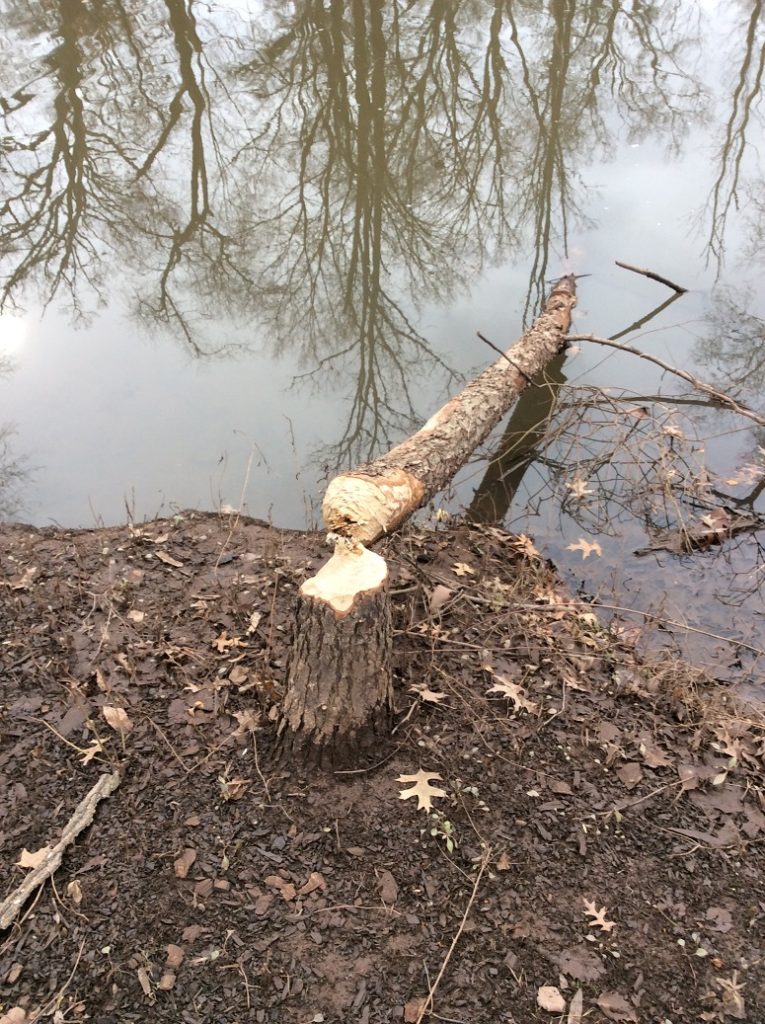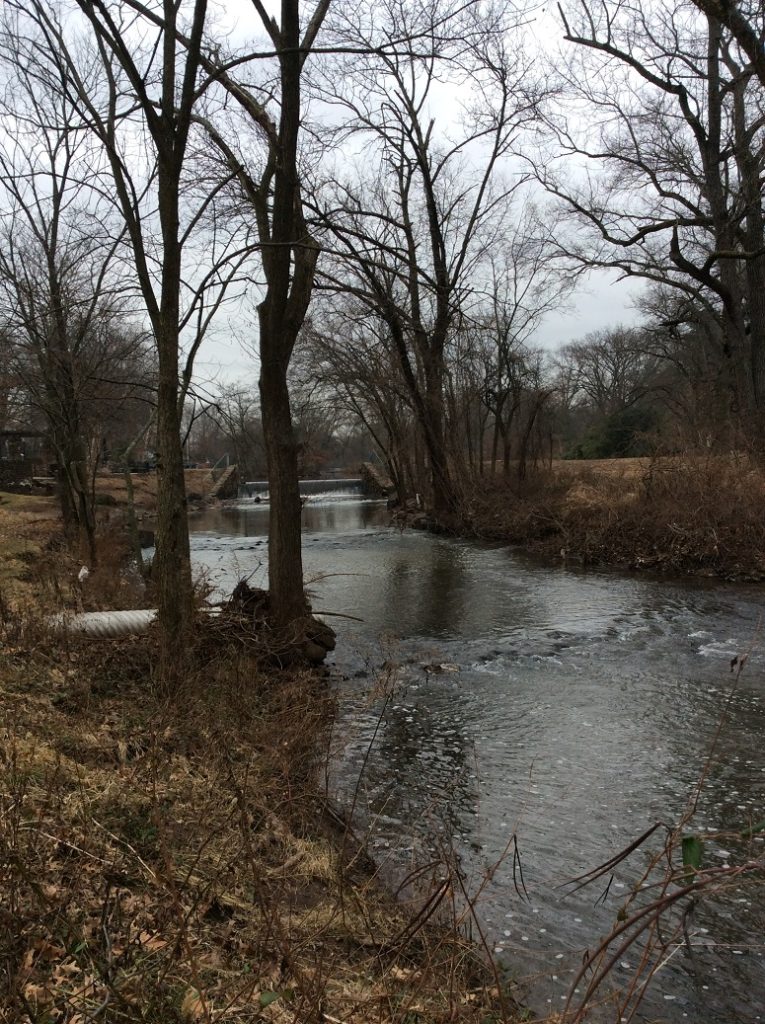Final Stream Habitat Assessment – Ambrose Brook
Article and Photos by Margo Persin, Rutgers Environmental Steward
Editor’s Note: In 2018 Margo Persin joined the Rutgers Environmental Steward program for training in the important environmental issues affecting New Jersey. Program participants are trained to tackle local environmental problems through a service project. As part of Margo’s service project she chose to conduct assessments of a local stream for a year, and to provide the data she gathered to the Lower Raritan Watershed Partnership (LRWP). Margo keeps a journal of her experiences, excerpts of which are included in the LRWP’s “Voices of the Watershed” column.
As my year-long project entailing the assessment of the Ambrose Brook is now drawing to a close, I wanted to make one last observational visit to the site, which I completed on 31 December 2018. As I was driving over, in my mind I reviewed the year and wondered, at this point in the process, if there would anything more or new that I could possibly say about the Ambrose Brook. Well, was I in for a surprise, and a most captivating one at that! I arrived at just about 10:30 am, I was the only human around, and as I traversed the eastern side of the stream, I spied just one pair of mallards afloat on the lazy, meandering brook. The male’s plumage was blatantly obvious against the muddy, slow-moving current, whereas the female’s was camouflaged just about perfectly with the background: muddy water, brown earth, fallen leaves. The sky was overcast and the air was calm with a moderate 40 degree temperature that provided a welcome and silent capsule for my period of observation. My goal was to walk the bank, if possible on both sides, from a bit past the small waterfall all the way back to the footbridge and back again. And with this trajectory, nature provided me with a series of surprises.
As I made my way south on the eastern side of the brook, a veritable flock of mallard pairs came into view, comfortably resting on the water’s surface, the first that I have seen in the entire year. They gave me a slight if sneering glance, then turned away from me to glide closer to the western bank. Secondly, as I walked along the bank farther and farther from the street noise, I noticed that several trees had a distinctive series of marks along the base up to about one foot, all around the circumference of the trunk. I am not a naturalist, but I wondered if by any chance it could be a family of beavers at work. “Nah”, I said to myself, this place has too many people around, “no way”. Well, I suspect that I was proved wrong! At another spot, a neatly chewed tree, gnawed to what looked like a precise pencil point, had been felled and now was lying in the water, the severed trunk just inches from the sad looking stump. “Aha!” I exclaimed, “nature wins again, beavers’ resourcefulness as effective or more so as a mini-chainsaw”. I never did see any beavers but their handiwork was a very good indicator of their presence. At the farthest point away from the street, still on the eastern side of the brook, felled trees were piled up very close to the water’s edge, and I wondered whether that might be an indication of a lovely and cozy den. Hmmmm…..

After crossing the footbridge to the western side of the brook, I was presented with another of nature’s surprises. Now that winter is officially upon us and foliage has died back both above my head and below my feet, I was able to make my way about three quarters of the distance to the small waterfall. As I walked among the brown brush, fallen branches, and dormant grasses, it dawned on me that the brook had on this western bank a lovely and wide flood plain well below street level that I had never noticed before, given the presence of a daunting array of vegetation, including some very fierce brambles that had heartily discouraged my passage in previous visits. Wow! Talk about hiding in plain sight! I presume that this flood plain accepts the surplus of storm water that occasionally overflows the banks of the brook, which is then absorbed into the ecosystem, but in turn does not flood area streets … or basements. Nifty!

And two last affirmative surprises. Having crossed over once again to the eastern side, I noticed yet another storm water outlet that fed into the brook, close to the small waterfall. I had never noticed it before because of the verdant camouflage offered by the grasses that were presumably fed by its generous flow and overflow. It was right there all the time, but I had never seen it. It humbled me and made me smile – in this visit, I suspect that nature, anthropomorphized to be sure, was having a good chuckle at my expense because of my naiveté. To think that there would be ‘nothing more to see’ was pure hubris and I was given my comeuppance. In addition, the waterfall also had a surprise. Even though the water continues to flow, it was evident that it was starting to freeze at the base! The clumps of white ice shone unmistakably through the tumbling current, a solemn reminder that winter is upon us. I would have missed it if I had not walked closer to the waterfall than I had ever done on previous visits.

The last surprise was not a very happy one. As I made my way on both sides of the brook, I took note of several places where the water was almost completely stagnant, where the current did not have the opportunity to lend an active, cleansing presence. And in those small culverts at the water’s edge, I noted that the water kept a glaze of oil slick of who knows what composition. At first glance I had guessed that the water might be beginning to freeze, but upon closer inspection, the real reason for the discoloration was obvious: water pollution of a chemical nature. Ugh.
So this was my visit, a combination of wonder and despair. I plan to offer in the coming weeks one last report, an estimation of the year’s trajectory as applied to my original proposal for this project. Happy New Year, everyone! May nature be your guide and live in your heart.
